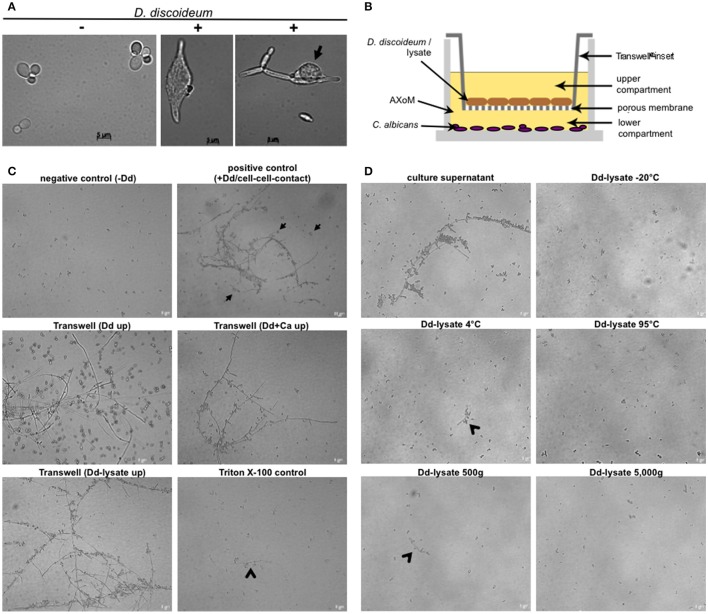Figure 7.
Hyphae formation of C. albicans during co-incubation with D. discoideum is contact-independent. (A) C. albicans SC5314 produces hyphae inside (middle panel) and outside (right panel) D. discoideum AX2. Without amoebae no hyphae formation could be detected (left panel). The arrow indicates D. discoideum in direct contact with C. albicans filaments. (B) Scheme of the Transwell®-assay. Cells were separated in AXoM by a porous membrane (pore size 0.04 μm). The upper compartment contained D. discoideum AX2 cells or cell lysate. The lower compartment always contained C. albicans SC5314. (C) Results of the Transwell®-assay. As a negative control C. albicans cells were incubated in AXoM without D. discoideum, as positive control C. albicans was incubated in AXoM with D. discoideum AX2 but without Transwell®-insert (cell-cell contact; arrows). Arrowheads indicate pseudohyphae formation of C. albicans. (D) Hyphae formation of C. albicans with differentially treated D. discoideum AX2 cell-lysates. Only untreated culture supernatant was able to induce hyphae formation. Arrowheads indicate pseudohyphae formation.

